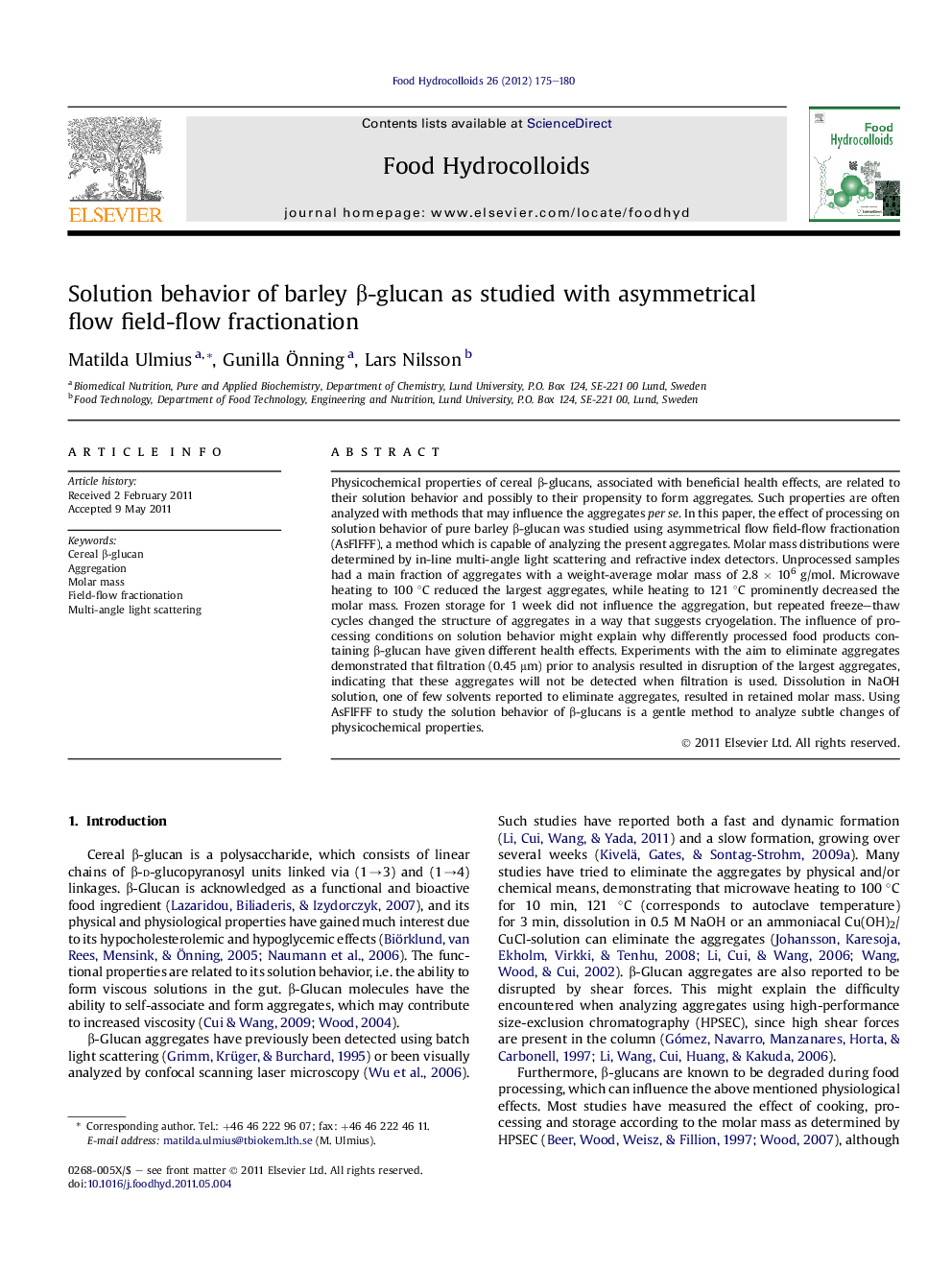| Article ID | Journal | Published Year | Pages | File Type |
|---|---|---|---|---|
| 604994 | Food Hydrocolloids | 2012 | 6 Pages |
Physicochemical properties of cereal β-glucans, associated with beneficial health effects, are related to their solution behavior and possibly to their propensity to form aggregates. Such properties are often analyzed with methods that may influence the aggregates per se. In this paper, the effect of processing on solution behavior of pure barley β-glucan was studied using asymmetrical flow field-flow fractionation (AsFlFFF), a method which is capable of analyzing the present aggregates. Molar mass distributions were determined by in-line multi-angle light scattering and refractive index detectors. Unprocessed samples had a main fraction of aggregates with a weight-average molar mass of 2.8 × 106 g/mol. Microwave heating to 100 °C reduced the largest aggregates, while heating to 121 °C prominently decreased the molar mass. Frozen storage for 1 week did not influence the aggregation, but repeated freeze–thaw cycles changed the structure of aggregates in a way that suggests cryogelation. The influence of processing conditions on solution behavior might explain why differently processed food products containing β-glucan have given different health effects. Experiments with the aim to eliminate aggregates demonstrated that filtration (0.45 μm) prior to analysis resulted in disruption of the largest aggregates, indicating that these aggregates will not be detected when filtration is used. Dissolution in NaOH solution, one of few solvents reported to eliminate aggregates, resulted in retained molar mass. Using AsFlFFF to study the solution behavior of β-glucans is a gentle method to analyze subtle changes of physicochemical properties.
Graphical abstractFigure optionsDownload full-size imageDownload as PowerPoint slide
